Next Головоломки и пазлы для детей  Интеллектуальные игры для детей Previous
Интеллектуальные игры для детей Previous
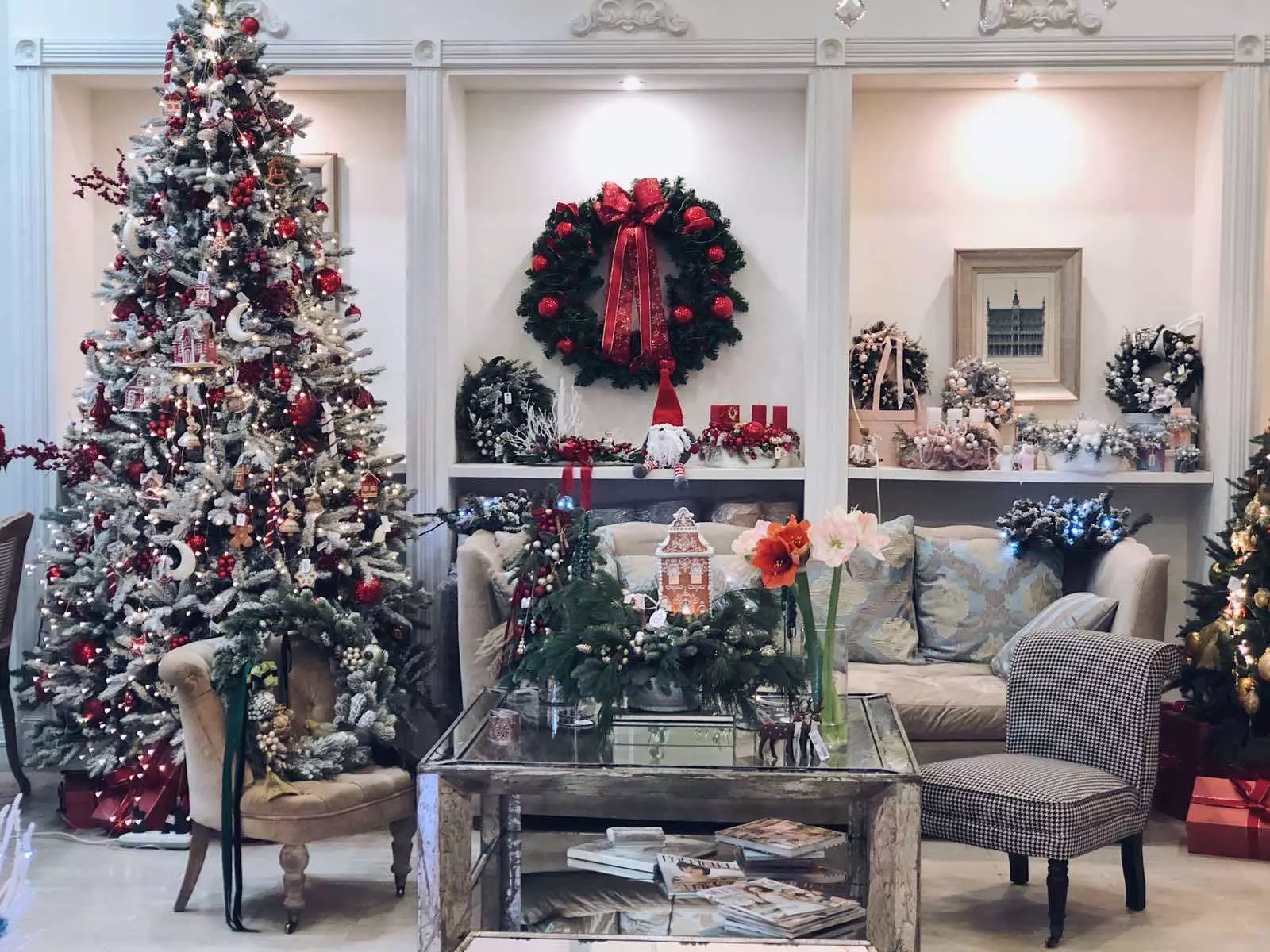
Do you like the stuff? We will be grateful for the reposts.
 Интеллектуальные игры для детей Previous
Интеллектуальные игры для детей Previous
There was something about the tinsel of the 1960s.
She was "not like" the tinsel of today.
The silver tinsel we used to decorate our tree 50 years ago had a certain feeling.
Do you remember?
It seemed heavy to handle. Much heavier than today's shiny plastic tinsel.
I can also think of tiny strips of antique-style tinsel peeling off heavy strands and clinging to our hands and clothes.
In addition, it had its own unique scent - something that made the decoration of the Christmas tree unusually special.
Here are some fun facts about tinsel and other Christmas decorations.
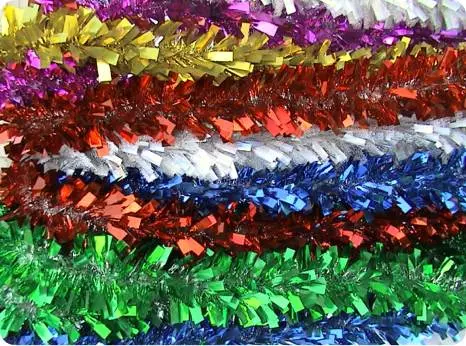
Tinsel's origins date back to the early 1600s in Germany. Tinsel 400 years ago was nothing like the plastic tinsel we use today. The first tinsel was made from crushed silver. Real silver.
The tinsel craftsmen flattened the silver and then cut it into thin strips.
When supply couldn't keep up with demand, tinsel makers invented machines to boost production.
Later versions of tinsel were made from a combination of tin and lead. But it turned out to be too hard. So we have to thank the British for the shiny silver tinsel we enjoy today.
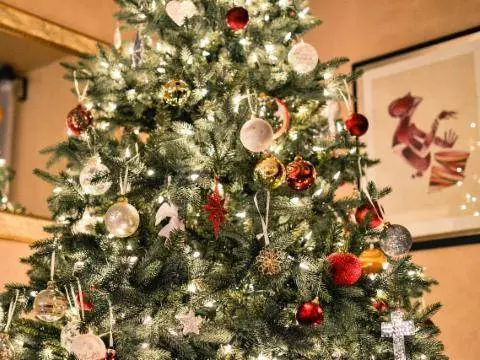
Our 1960s tree was purchased from a local grocery store. Today we have dedicated Christmas tree farms where families make the special occasion to visit the farm to pick and cut their own tree.

There is no record of when spruce and pine trees were first used as Christmas trees. By all accounts, it started about 1000 years ago in Northern Europe. Many early Christmas trees were hung upside down from the ceiling with chains (suspended from chandeliers or light hooks).
Plastic expandable and vertical trees are very popular today due to their convenience and the absence of the need to throw out pine or spruce.
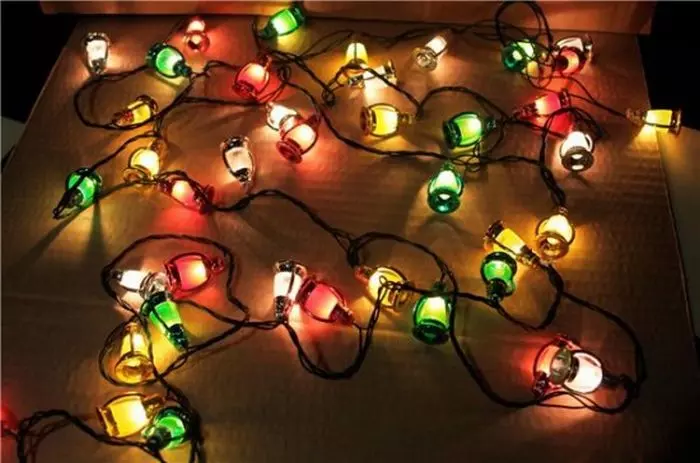
Oh, those bright lights!
In the Victorian era, the tree was decorated with candles symbolizing the stars.
In many parts of Europe, candles are still used to decorate Christmas trees.
The first electrically powered Christmas lights (garland) were invented by the American Ralph Morris back in 1895. Interestingly, the lights you are probably using today are not that much different from the original Morris designs 123 years ago.
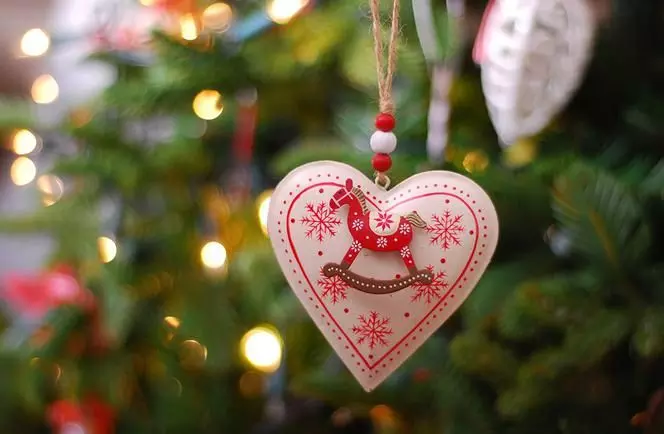
Here's an interesting fact that you may not have known about.
American retailer FW Woolworth made his fortune importing knick-knacks into the United States in 1880. Just ten years later, he reportedly was making $ 25 million a year.
Baubles were first invented in Germany by Hans Greiner, who first made them in the late 1840s. The first baubles were glass in the shape of fruits and nuts, which over time acquired a more spherical shape.
Queen Victoria of Britain is said to have been very passionate about the tradition of trinkets and brought them from Germany to Europe in the mid to late 1800s.
Can you remember how they easily shattered into small pieces? Today we have plastic versions. They last longer and are cheaper to buy compared to the old "glass" version.
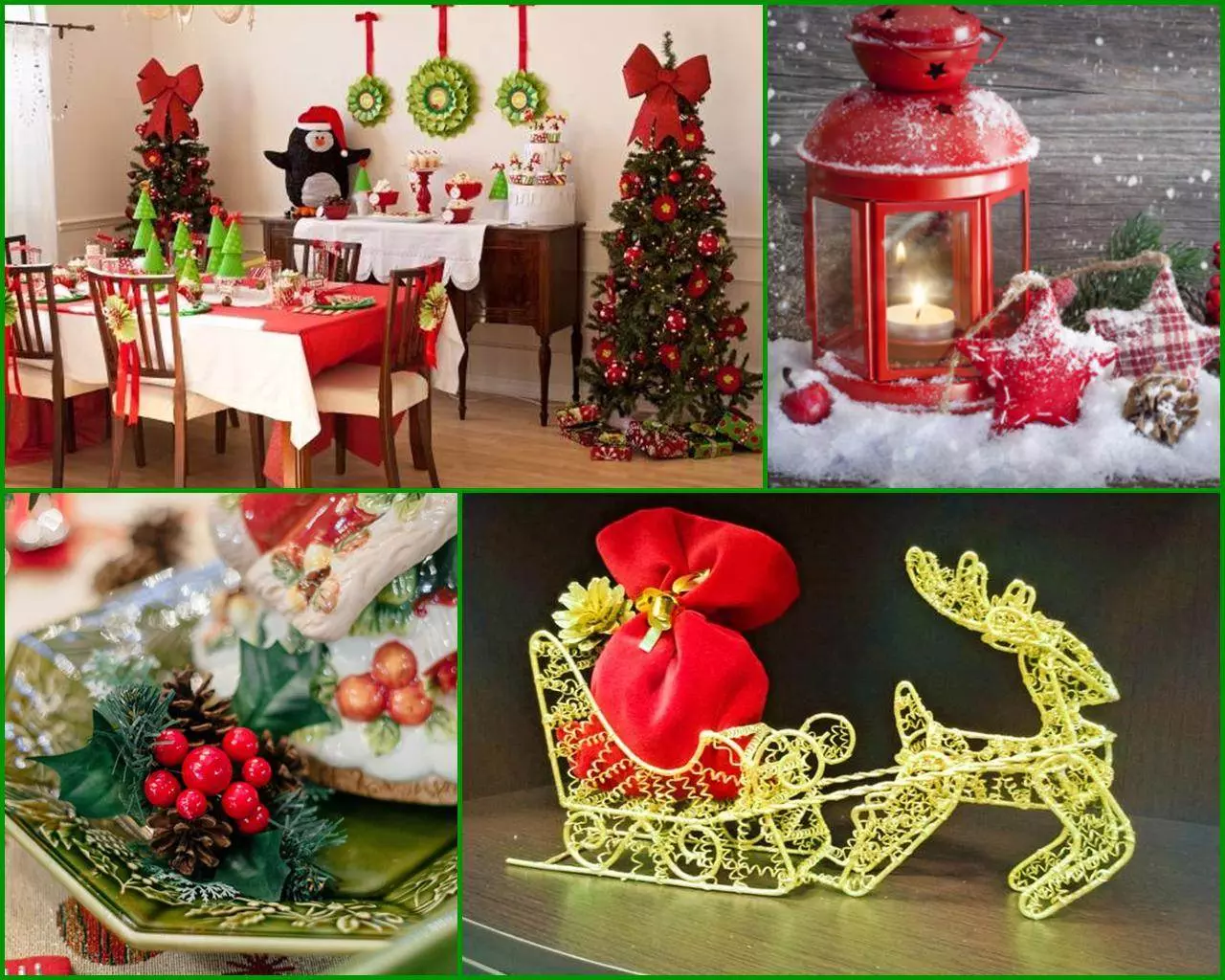
Almost anything will suit them.
Today you see more homemade and craft style jewelry. Many people love to make their own Christmas decorations.
Some of the items that crafty people turn into jewelry today are wine corks, paper cups, paint bits (paint swatch charts), ice cream sticks, and paper plates.
It's amazing what can be created with a little paint, color glitter and imagination.
Or choose from plastic variations of deer, stars, angels, fruits, butterflies, birds and gingerbread men.
By the way, what does your family choose to decorate the Christmas tree annually?
Star or Angel?
Be it a star, angel or something especially personal - I hope it helps to cheer up your home this holiday season.
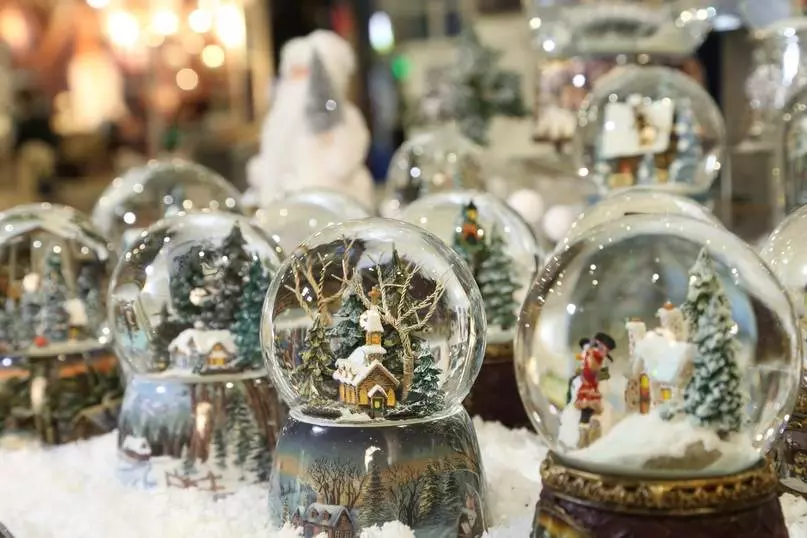
Shaking Snow Globes are synonymous with Christmas, but they came about by accident. In 1900, a surgical instrument mechanic in Vienna named Edwin Perzi tried to improve the brightness of a light bulb. He was inspired by the shoemakers of the day, who placed a "glass ball filled with water in front of a flame" and tried to do the same with a light bulb. Unfortunately, he found that the process didn't work as well.
His son told the BBC what happened next: "One day he found a white powder, semolina, which was used for baby food. He poured it into a glass ball and it was soaked in water and very slowly sank to the base ". It reminded him of falling snow. Next thing you know, the first snow globe company, Original Vienna Snow Globes, was established in 1905. And it still works!
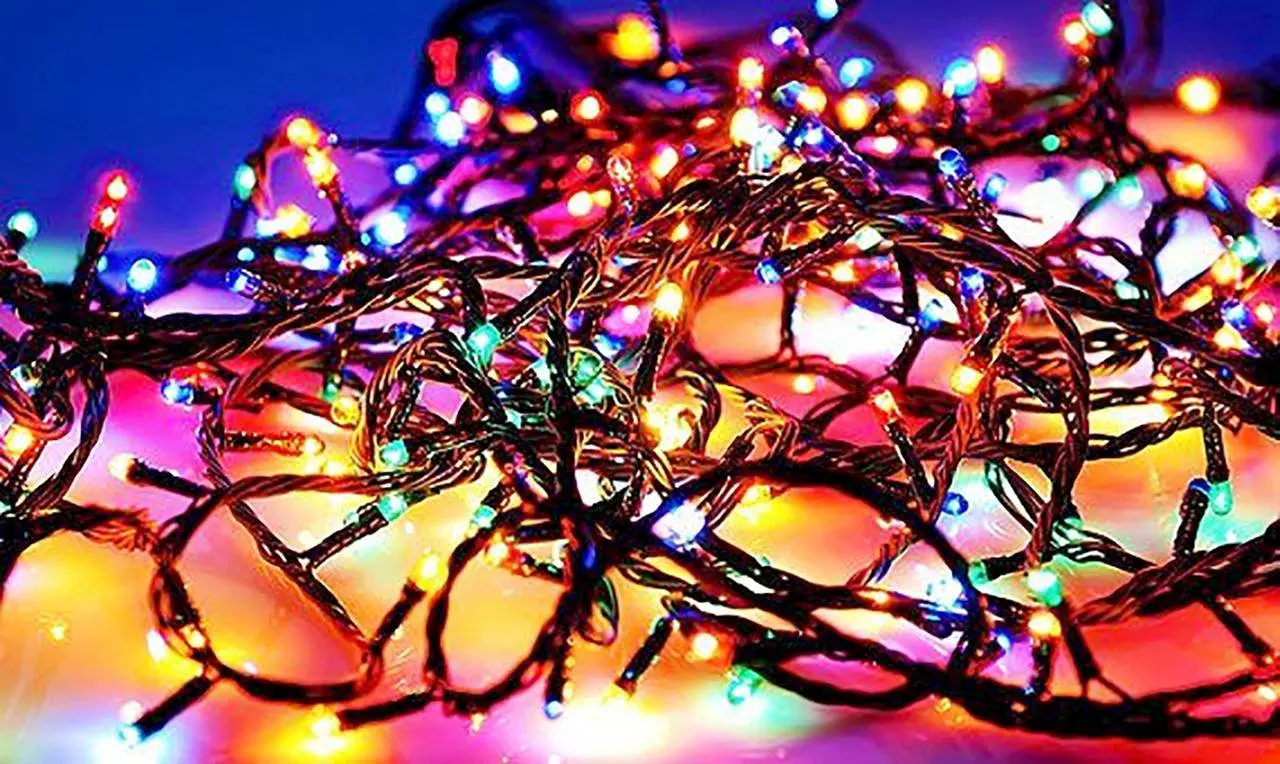
On Tuesday, December 22nd, the electric garland turned exactly 139 years old. In 1882, it was invented by Edward Johnson, an assistant to the famous Thomas Edison.
It was he who decided to paint 80 mini-bulbs in blue, red and white and connect them. Crossword.Nalench.com publishes some interesting facts about the birthday of the Christmas tree garland.
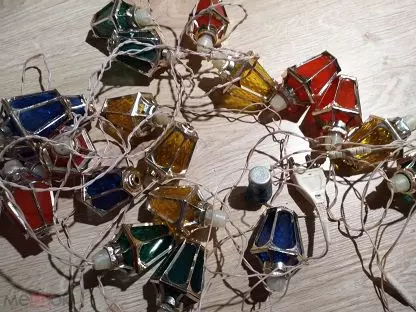
To present his invention to the world, Edward Johnson invited journalists to the presentation, but at that time no one was interested in the electric garland. For a long time, festive fir trees were decorated with ordinary candles.
The first garland advertisements were published in 1901, and they only gained popularity in the 1920s.

The first Christmas tree garlands were made by hand, and all the parts were sold separately so that the buyer himself combined them into one design.
The first Christmas tree garlands were created at the dawn of electrification (Edison built the first central power station in 1882), so they were extremely fire hazardous. The ready-to-use garlands were manufactured by General Electric, USA.
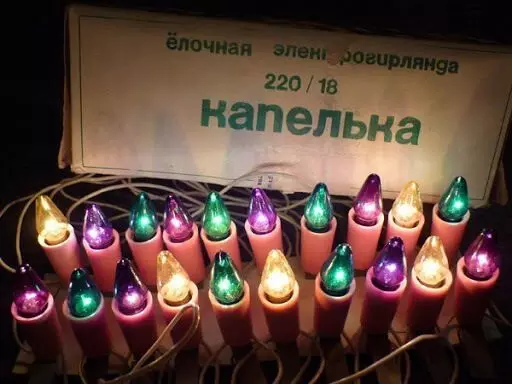
In the USSR electric garlands came only in 1938. The fact is that because of the First World War, they were treated negatively as "German custom", and then the Bolsheviks completely banned the New Year and Christmas holidays. Only after 1935, in the Soviet Union, they began to decorate Christmas trees for the New Year, when the ban was lifted.
Against the backdrop of the "space race", the theme of space has become especially popular, which is reflected in the decorations for the New Year tree. Since 1967, the Ukrkabel plant in Kiev has been producing Kosmos electric garlands with light bulbs in the form of space satellites, planets, asteroids and rockets.

By far the most popular are LED garlands. They are moisture resistant, which can be used to decorate the Christmas tree both at home and on the street. Red and yellow can last up to 90 thousand hours, white - about 50 thousand hours.
The exact date of the appearance of the first domestic electric garlands remains unknown; it cannot be ruled out that individual piece samples existed long before the final and irrevocable victory of the power of the Soviets. It can be argued with about the same certainty that the first Soviet garlands were of artisanal origin and consisted of the most ordinary bulbs (full-size or automobile), the bulbs of which were painted in different colors. This made it possible to achieve a festive effect with "little blood" and at the same time to make another frivolous gesture towards the church - this version of the tree design did not remind in any way.
Actually, the first factory-made garlands differed little from the handicraft ones, both externally and in the manufacturing method (photo 2).

The reason for this was extremely prosaic: this category of products was secondary for factories and was produced on a secondary basis, in fact, "from what was" superfluous in warehouses. This tendency as a red line will go through the entire more than 50-year history of Soviet New Year's garlands, which, however, will not prevent many very beautiful and unusual models from appearing.
The main manufacturers of garlands were, of course, the "state allied electric lamp factories", the most important and advanced of which was the Moscow one (MELZ). It is not known what the pre-war scale of production was, but during the war years, the country was definitely no longer up to New Year's bulbs. Therefore, this direction received real development only in the post-war period, simultaneously with the formation of a renewed lighting industry.
At first (40 ... 50 years), the same colored light bulbs remained the main idea of domestic garlands. However, these were not the illiquid assets left over from the "military", but the types quite specially designed for their purpose. “Christmas tree lamps” (as they were called then) appear in decorative flasks (candles, balls, lanterns and even fruits and vegetables, figurines of fairy-tale characters, cars), and the presence of artistic painting is considered to be special chic. Of course, everything was done exclusively by hand (as is the case with ordinary Christmas tree decorations), so that each flashlight lamp is unique and inimitable, like any hand-made. They did not forget about the convenience of consumers: from now on, all bulbs are necessarily replaceable, that is, they are equipped with an E10 base and are screwed into sockets. At the same time, the garlands begin to be equipped with spare bulbs, so you can extend their life without using any third-party spare parts and tools. The Tomsk Electric Lamp Plant, formed during the war years on the basis of the MELZ evacuated to those regions, is connected to the production of garlands and lamps for them.
Structurally, the garlands of that time were nothing more than a set of series-connected bare E10 cartridges, the bodies of which were made of light-colored carbolite. "Aerobatics" were cartridges equipped with removable clothespins (like linen) for attaching to the branches of a Christmas tree. No additional decor was provided; [font = Arial Black]New Year's electric garlands although they became an independent type of factory production, they remained "poor relatives", spending additional resources on them seemed inexpedient. In the end, the country was just recovering from the consequences of the war and was clearly not up to any excesses.
The most interesting period in the history of interest to us begins towards the end of the 1960s. As life in the country improves, the New Year's decor industry comes to life. New electric lamp factories appear (for example, Lvov and Saransk), mastering new types of special lamps for New Year's garlands, and at the same time the accompanying production of garlands themselves. Various plants of the electrical and electronic industries, as well as numerous assembly plants using the labor of disabled people, are also connected to their production. As a result, by the end of this period (~ by the beginning of the 80s) there are a great many varieties of garlands, and they are made at enterprises in almost all regions of the USSR. Without exaggeration, these were the real "golden decades" of the Soviet New Year's decoration.
Let's go back to the development of the design of New Year's garlands, which we left at the stage of experiments with the shape and color of light bulbs. In the 1960s, Soviet industry made a radical breakthrough, mastering the production of a whole range of previously unseen plastics - from polyethylene and lavsan to polystyrene and PMMA. Previously, individual plastic products were used only in military technology, were very rare and expensive, and therefore completely inaccessible for "consumer goods". Now the situation has changed dramatically - polymers have “stepped into the masses”, they have begun to produce parts and even whole products, for which only metal, glass, or, in extreme cases, carbolite were previously used. This was reflected in the subject of interest to us.
First of all, note that for the first time garlands with "shades" ("lampshades" on each light bulb) appear. Before the advent of plastics, they could have been made only of glass, which inevitably would have turned out to be too fragile and heavy, besides, the function of such shades was successfully performed by the bulbs of decorative lamps themselves. The first period (late 60s ... early 70s) is characterized by experiments with opaque plastics (colored polyethylene and polystyrene), which made it possible to obtain luminous elements of various colors, shapes and, most importantly, sizes. The theme of their design is also characteristic, of course, the most relevant at that time was everything related to space exploration, which was reflected in the shapes of the lanterns of many garlands. For example, even the balls of the famous "Ball" garland of the same name are made with parallels and meridians drawn on them, bearing a subtle hint (photo 5).
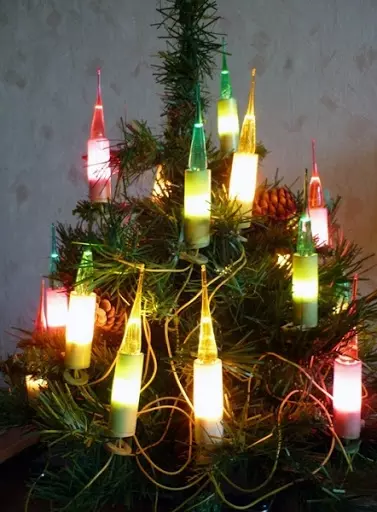
However, the brightness of such lampshades is low, since a significant amount of light is absorbed by the plastic. Therefore, research in this area was continued.
The widely used plafonds made of transparent plexiglass ("plexiglass"), which are familiar to us, in combination with colored bulbs, appear only closer to the mid-1970s. This does not happen by chance: this material is the newest at that time, and at about the same years it began to be actively used in "serious" lighting (for example, diffusers of fluorescent lamps began to be made from it). It was quickly noticed that prismatic elements made of this type of plastic have good refractive properties, reminiscent of crystal. Many people remember the furor that in the 70s produced the "pseudo-crystal" chandeliers "Cascade", consisting of just such elements. This theme resonated well with winter, ice motives, so it was adopted for New Year's garlands as well. It is no exaggeration to say that the "Crystal" released by MELZ became a real hit in this area (photo 7).

Moreover, in terms of the number of clones of varying degrees of similarity, produced at various factories, she confidently bypassed the "Cascade" several times (a separate branch of our forum is devoted to this phenomenon).
Happy Holidays to all Crossword.Nalench.com visitors.
She was "not like" the tinsel of today.
The silver tinsel we used to decorate our tree 50 years ago had a certain feeling.
Do you remember?
It seemed heavy to handle. Much heavier than today's shiny plastic tinsel.
I can also think of tiny strips of antique-style tinsel peeling off heavy strands and clinging to our hands and clothes.
In addition, it had its own unique scent - something that made the decoration of the Christmas tree unusually special.
Here are some fun facts about tinsel and other Christmas decorations.
1. Tinsel / Rain / Serpentine

Tinsel's origins date back to the early 1600s in Germany. Tinsel 400 years ago was nothing like the plastic tinsel we use today. The first tinsel was made from crushed silver. Real silver.
The tinsel craftsmen flattened the silver and then cut it into thin strips.
When supply couldn't keep up with demand, tinsel makers invented machines to boost production.
Later versions of tinsel were made from a combination of tin and lead. But it turned out to be too hard. So we have to thank the British for the shiny silver tinsel we enjoy today.
2. Christmas tree

Our 1960s tree was purchased from a local grocery store. Today we have dedicated Christmas tree farms where families make the special occasion to visit the farm to pick and cut their own tree.

There is no record of when spruce and pine trees were first used as Christmas trees. By all accounts, it started about 1000 years ago in Northern Europe. Many early Christmas trees were hung upside down from the ceiling with chains (suspended from chandeliers or light hooks).
Plastic expandable and vertical trees are very popular today due to their convenience and the absence of the need to throw out pine or spruce.
3. Christmas lights or garland

Oh, those bright lights!
In the Victorian era, the tree was decorated with candles symbolizing the stars.
In many parts of Europe, candles are still used to decorate Christmas trees.
The first electrically powered Christmas lights (garland) were invented by the American Ralph Morris back in 1895. Interestingly, the lights you are probably using today are not that much different from the original Morris designs 123 years ago.
4. Baubles

Here's an interesting fact that you may not have known about.
American retailer FW Woolworth made his fortune importing knick-knacks into the United States in 1880. Just ten years later, he reportedly was making $ 25 million a year.
Baubles were first invented in Germany by Hans Greiner, who first made them in the late 1840s. The first baubles were glass in the shape of fruits and nuts, which over time acquired a more spherical shape.
Queen Victoria of Britain is said to have been very passionate about the tradition of trinkets and brought them from Germany to Europe in the mid to late 1800s.
Can you remember how they easily shattered into small pieces? Today we have plastic versions. They last longer and are cheaper to buy compared to the old "glass" version.
5. Various decorations

Almost anything will suit them.
Today you see more homemade and craft style jewelry. Many people love to make their own Christmas decorations.
Some of the items that crafty people turn into jewelry today are wine corks, paper cups, paint bits (paint swatch charts), ice cream sticks, and paper plates.
It's amazing what can be created with a little paint, color glitter and imagination.
Or choose from plastic variations of deer, stars, angels, fruits, butterflies, birds and gingerbread men.
By the way, what does your family choose to decorate the Christmas tree annually?
Star or Angel?
Be it a star, angel or something especially personal - I hope it helps to cheer up your home this holiday season.
6. The snow globe was invented by accident when a mechanic tried to improve the light bulb

Shaking Snow Globes are synonymous with Christmas, but they came about by accident. In 1900, a surgical instrument mechanic in Vienna named Edwin Perzi tried to improve the brightness of a light bulb. He was inspired by the shoemakers of the day, who placed a "glass ball filled with water in front of a flame" and tried to do the same with a light bulb. Unfortunately, he found that the process didn't work as well.
His son told the BBC what happened next: "One day he found a white powder, semolina, which was used for baby food. He poured it into a glass ball and it was soaked in water and very slowly sank to the base ". It reminded him of falling snow. Next thing you know, the first snow globe company, Original Vienna Snow Globes, was established in 1905. And it still works!
The Christmas tree garland is 139 years old: 7 interesting facts about the invention

On Tuesday, December 22nd, the electric garland turned exactly 139 years old. In 1882, it was invented by Edward Johnson, an assistant to the famous Thomas Edison.
It was he who decided to paint 80 mini-bulbs in blue, red and white and connect them. Crossword.Nalench.com publishes some interesting facts about the birthday of the Christmas tree garland.
Interesting facts about the garland

To present his invention to the world, Edward Johnson invited journalists to the presentation, but at that time no one was interested in the electric garland. For a long time, festive fir trees were decorated with ordinary candles.
The first garland advertisements were published in 1901, and they only gained popularity in the 1920s.
The first electric garland turned out to be of no interest to anyone

The first Christmas tree garlands were made by hand, and all the parts were sold separately so that the buyer himself combined them into one design.
The first Christmas tree garlands were created at the dawn of electrification (Edison built the first central power station in 1882), so they were extremely fire hazardous. The ready-to-use garlands were manufactured by General Electric, USA.
Garlands in the form of missiles, USSR

In the USSR electric garlands came only in 1938. The fact is that because of the First World War, they were treated negatively as "German custom", and then the Bolsheviks completely banned the New Year and Christmas holidays. Only after 1935, in the Soviet Union, they began to decorate Christmas trees for the New Year, when the ban was lifted.
Against the backdrop of the "space race", the theme of space has become especially popular, which is reflected in the decorations for the New Year tree. Since 1967, the Ukrkabel plant in Kiev has been producing Kosmos electric garlands with light bulbs in the form of space satellites, planets, asteroids and rockets.
The most popular - LED garlands

By far the most popular are LED garlands. They are moisture resistant, which can be used to decorate the Christmas tree both at home and on the street. Red and yellow can last up to 90 thousand hours, white - about 50 thousand hours.
History of Soviet Christmas lights
The exact date of the appearance of the first domestic electric garlands remains unknown; it cannot be ruled out that individual piece samples existed long before the final and irrevocable victory of the power of the Soviets. It can be argued with about the same certainty that the first Soviet garlands were of artisanal origin and consisted of the most ordinary bulbs (full-size or automobile), the bulbs of which were painted in different colors. This made it possible to achieve a festive effect with "little blood" and at the same time to make another frivolous gesture towards the church - this version of the tree design did not remind in any way.
Actually, the first factory-made garlands differed little from the handicraft ones, both externally and in the manufacturing method (photo 2).

The reason for this was extremely prosaic: this category of products was secondary for factories and was produced on a secondary basis, in fact, "from what was" superfluous in warehouses. This tendency as a red line will go through the entire more than 50-year history of Soviet New Year's garlands, which, however, will not prevent many very beautiful and unusual models from appearing.
The main manufacturers of garlands were, of course, the "state allied electric lamp factories", the most important and advanced of which was the Moscow one (MELZ). It is not known what the pre-war scale of production was, but during the war years, the country was definitely no longer up to New Year's bulbs. Therefore, this direction received real development only in the post-war period, simultaneously with the formation of a renewed lighting industry.
At first (40 ... 50 years), the same colored light bulbs remained the main idea of domestic garlands. However, these were not the illiquid assets left over from the "military", but the types quite specially designed for their purpose. “Christmas tree lamps” (as they were called then) appear in decorative flasks (candles, balls, lanterns and even fruits and vegetables, figurines of fairy-tale characters, cars), and the presence of artistic painting is considered to be special chic. Of course, everything was done exclusively by hand (as is the case with ordinary Christmas tree decorations), so that each flashlight lamp is unique and inimitable, like any hand-made. They did not forget about the convenience of consumers: from now on, all bulbs are necessarily replaceable, that is, they are equipped with an E10 base and are screwed into sockets. At the same time, the garlands begin to be equipped with spare bulbs, so you can extend their life without using any third-party spare parts and tools. The Tomsk Electric Lamp Plant, formed during the war years on the basis of the MELZ evacuated to those regions, is connected to the production of garlands and lamps for them.
Structurally, the garlands of that time were nothing more than a set of series-connected bare E10 cartridges, the bodies of which were made of light-colored carbolite. "Aerobatics" were cartridges equipped with removable clothespins (like linen) for attaching to the branches of a Christmas tree. No additional decor was provided; [font = Arial Black]New Year's electric garlands although they became an independent type of factory production, they remained "poor relatives", spending additional resources on them seemed inexpedient. In the end, the country was just recovering from the consequences of the war and was clearly not up to any excesses.
The most interesting period in the history of interest to us begins towards the end of the 1960s. As life in the country improves, the New Year's decor industry comes to life. New electric lamp factories appear (for example, Lvov and Saransk), mastering new types of special lamps for New Year's garlands, and at the same time the accompanying production of garlands themselves. Various plants of the electrical and electronic industries, as well as numerous assembly plants using the labor of disabled people, are also connected to their production. As a result, by the end of this period (~ by the beginning of the 80s) there are a great many varieties of garlands, and they are made at enterprises in almost all regions of the USSR. Without exaggeration, these were the real "golden decades" of the Soviet New Year's decoration.
Let's go back to the development of the design of New Year's garlands, which we left at the stage of experiments with the shape and color of light bulbs. In the 1960s, Soviet industry made a radical breakthrough, mastering the production of a whole range of previously unseen plastics - from polyethylene and lavsan to polystyrene and PMMA. Previously, individual plastic products were used only in military technology, were very rare and expensive, and therefore completely inaccessible for "consumer goods". Now the situation has changed dramatically - polymers have “stepped into the masses”, they have begun to produce parts and even whole products, for which only metal, glass, or, in extreme cases, carbolite were previously used. This was reflected in the subject of interest to us.
First of all, note that for the first time garlands with "shades" ("lampshades" on each light bulb) appear. Before the advent of plastics, they could have been made only of glass, which inevitably would have turned out to be too fragile and heavy, besides, the function of such shades was successfully performed by the bulbs of decorative lamps themselves. The first period (late 60s ... early 70s) is characterized by experiments with opaque plastics (colored polyethylene and polystyrene), which made it possible to obtain luminous elements of various colors, shapes and, most importantly, sizes. The theme of their design is also characteristic, of course, the most relevant at that time was everything related to space exploration, which was reflected in the shapes of the lanterns of many garlands. For example, even the balls of the famous "Ball" garland of the same name are made with parallels and meridians drawn on them, bearing a subtle hint (photo 5).

However, the brightness of such lampshades is low, since a significant amount of light is absorbed by the plastic. Therefore, research in this area was continued.
The widely used plafonds made of transparent plexiglass ("plexiglass"), which are familiar to us, in combination with colored bulbs, appear only closer to the mid-1970s. This does not happen by chance: this material is the newest at that time, and at about the same years it began to be actively used in "serious" lighting (for example, diffusers of fluorescent lamps began to be made from it). It was quickly noticed that prismatic elements made of this type of plastic have good refractive properties, reminiscent of crystal. Many people remember the furor that in the 70s produced the "pseudo-crystal" chandeliers "Cascade", consisting of just such elements. This theme resonated well with winter, ice motives, so it was adopted for New Year's garlands as well. It is no exaggeration to say that the "Crystal" released by MELZ became a real hit in this area (photo 7).

Moreover, in terms of the number of clones of varying degrees of similarity, produced at various factories, she confidently bypassed the "Cascade" several times (a separate branch of our forum is devoted to this phenomenon).
Happy Holidays to all Crossword.Nalench.com visitors.
Do you like the stuff? We will be grateful for the reposts.
Comments:
Be the first to comment on the article!
Interesting facts (Collapse) |
|---|
| |
Петро Полюхович © 2011-2024
Join us if you are a true crossword puzzler!


 Login
Login Crosswords
Crosswords Conundrums
Conundrums Sudoku
Sudoku English
English Turkish
Turkish About
About
